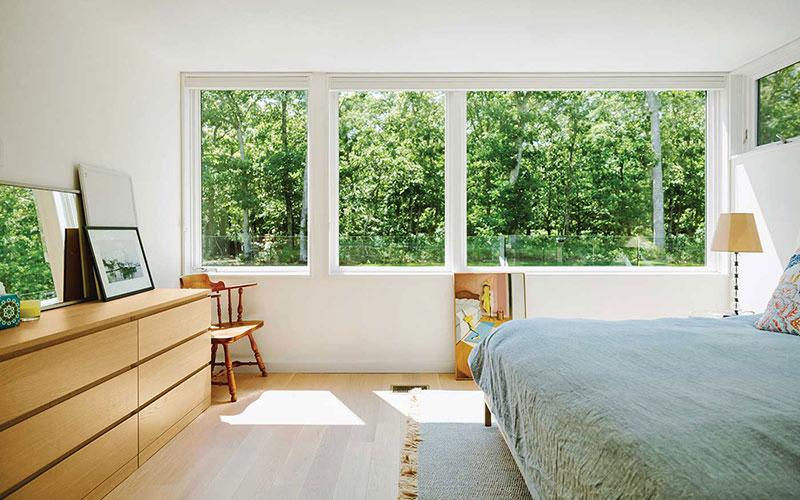Picture Window Design
July 7, 2022
Found in family rooms and other shared living spaces, picture windows can be multi-faceted design elements and choosing them for your home prompts lots of questions.
Known as large, non-operating windows, picture windows are specifically designed to take advantage of beautiful views and pull in as much natural light as possible. While they are mostly found in family rooms and other shared living spaces, these windows can be built in most any size or shape and can be connected with operating windows.
From finding the best way to leverage views and maintain privacy to figuring out how they will interact with a room’s intended use and furnishings, choosing the size and location of your picture window is crucial.
Check out these design tips from a seasoned architect:
- Highlight The Best Views: Installing a picture window is the ideal way to capture a scenic view or expansive landscape just like a picture frame can capture and define a beautiful painting. If your home is located in an urban area, your scenery might consist of a captivating cityscape or inspiring skyline. If your home is surrounded by nature, a picture window is a great opportunity to highlight your ever-changing nature views. And while most often found in shared spaces, don’t discount the idea of installing picture windows in offices, bedrooms and even large bathrooms.
- Maintain Privacy: Picture windows are not just for living rooms. More private rooms can also benefit from a well-placed picture window. While one obvious advantage is that it allows an occupant a view of the outdoors, the flip side is that a curious neighbor or passerby can see inside the home.
“Natural light is desirable in most every room, but in some spaces, privacy is a necessity,” Gibson said. “When choosing a glazing plan for bedrooms and large bathrooms, and even garages, you can always consider using tinted glass, frosted glass, or glass with an obscuring texture like rain or reed glass.” - Consider Your Space: At the very beginning of the design stages, it’s crucial to envision exactly how any given room will be used. You need to think about which parts of a room will benefit from harnessing the most light, how that light will affect TV and computer screens and how the furnishings and traffic will interact with the size and location of the window. It might be best to have the bottom of a picture window located just above the height of a sofa, or a full wall of glass might be the perfect complement to the way you plan to interact with the space.
- Don’t Forget The Exterior: In addition to envisioning how a room might be used, you need to reconcile that plan with the aesthetics of the exterior.
“The exterior of a home can’t be neglected. It’s all about scale and proportion, for both the interior and exterior,” Gibson said. “If you spend all your energy focusing on a functional interior plan, the aesthetic results on the exterior, if that hasn’t been thought about simultaneously, will not be desirable.” - Small Spaces Are Important Too: Another advantage of picture windows is that they can change the impression of the size of a space, especially if their placement is well thought out.
“We try to think about glazing as experiential,” Gibson said. “Take expansion and contraction for example. When you first enter a home, you might get a sensation of contraction, and when you walk through to the back of the home and meet a whole wall of glazing which pulls the view of the landscape indoors, it can make a space feel three times larger than it is.”
For more information about the unique picture window solutions from Sahr Building Supply, please contact us here or call us directly at 616.288.2001.
